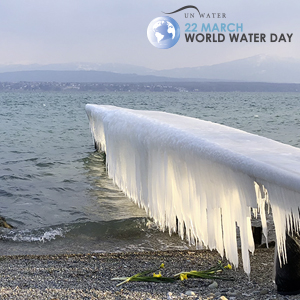Droughts, floods and water pollution place pressure on our global water supply, yet still demand is projected to increase 55 % by 20501). World Water Day draws attention to the need to explore solutions to meet that demand, while finding concrete ways to address the water challenges we face today.
ISO has developed more than 1 200 standards related to water, which provide practical solutions to many of these challenges, contributing directly to the United Nation’s Sustainable Development Goal No 6: clean water and sanitation for all.
Water reuse, for example, can deliver essential water resources where they are most needed. With 80 % of global wastewater flowing back into the ecosystem without being treated or reused2), the potential is huge. To address the issue, ISO has developed a number of standards for more efficient water use, including two series of International Standards on wastewater. ISO 24516 provides guidelines for the management of wastewater networks while ISO 16075 supports the use of wastewater in irrigation projects. Still to come, the future ISO 24528 will lay down the guidelines for reducing water loss in urban supply systems.
Organizations of all kinds, however, not just those involved in irrigation or public services, can play a part in managing this valuable resource. ISO 14046 provides a consistent assessment technique to monitor the water footprint of an organization, while the future ISO 24526 will set down the basic requirements on how to use water more efficiently. What’s more, a new project committee has just been formed, charged with developing standards for the labelling of water-efficient products.
Finally, ISO is also working on standards to support new technologies and solutions, such as the future ISO 30500 for non-sewered sanitation, which will improve sanitary conditions for the 1.8 billion people using contaminated water around the world3).
Doulaye Koné, Deputy Director on Water, Sanitation and Hygiene at the Gates Foundation, said work is being carried out on new technologies that can provide clean toilets where there is no reliable sewerage system. Doulaye is also Chair of the ISO project committee ISO/PC 305 that is working on guidelines to support this new technology.
“On-site/off-grid sanitation is a new industry. In order for it to develop, we need guidelines so that innovators can invest their resources smartly,” he said.
“The solutions available today are expensive, so we need economies of scale to bring down the costs. That’s also where International Standards can help by setting specifications for products that meet the needs of a large population. Once standards are adopted in countries, they allow the industry to flourish and compete for delivering the best innovations and services at the most affordable price.”
Learn more about ISO standards for water in our brochure ISO and water and a recent issue of ISOfocus.
2) UN Water
